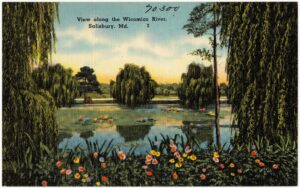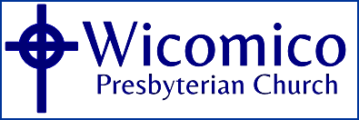
It is not known how many Presbyterians there were in this area 350 years ago. What was then all called Somerset County. But we know there were some.
There is one name that appears in records from that time – a David Brown. He came here from Glasgow, a self-affirming Presbyterian. His name appears in records dating back to 1670, as he served on several juries and grand juries, as a justice of the peace, a member of the Lower House of Assembly, and a militia officer.
Although I cannot give you their names, there is no doubt that David Brown had the company of other Presbyterians in Somerset County. Because there were enough in 1672 to form four worshiping communities alongside the rivers, which were the primary routes of travel back then.
It was a ruling of the Somerset County Grand Jury in March of 1672 that gave permission to Presbyterians to worship. Saying, “It is the opinion of us grand jurors that sermons be taught four several places in the county – the first Sunday at the house of William Stevens at Pokomoke, the second Sunday at the house of Daniel Cussix at Annamessix, the third Sunday at the house of Christopher Nutter in Manokin, and the fourth Sunday at the house of Thomas Roe at Wicomico.”
A man named Robert Maddox was assigned the responsibility of preaching at these four locations. Of him, we know little. He may or may not have been a Presbyterian, he may or may not have been an ordained minister. We don’t even know exactly what his name was because we find it spelled at least six different ways. But he seems to have handled the responsibility reasonably well, because we know that the number of Presbyterians in Somerset County increased dramatically by 1680.
And it isn’t hard for us to imagine that one preacher to manage four growing congregations – that would be a challenge. William Stevens recognized this and felt the need to do something.
Stevens was not a Presbyterian – he was a member of the Church of England. He was called a “liberal-minded churchman,” meaning that he believed that there should be religious freedom for all sects of Christianity. And so Stevens took it upon himself to send a letter to the Laggan Presbytery in the north of Ireland, pleading for a godly minister to come and lead the flock of Presbyterians in Somerset County.
It was Francis Makemie, freshly ordained, who was sent. In fact, it is likely that he was ordained for this purpose. Three other, more experienced ministers, came with him – William Traile, Thomas Wilson, and Samuel Douglas. These were men who had been in ministry long enough to have experienced the oppression that Presbyterians in Northern Ireland were subjected to at that time. They might have come to preach in Maryland to avoid prison in Ireland.
Together these four men provided the spiritual leadership and order that was needed here, but it is Makemie we remember most. Although the youngest of these men, he stood out as a leader. He organized these worshiping groups as churches and went on to plant more churches elsewhere and to establish the first presbytery in America – the presbytery of Philadelphia. He served as its first moderator.
Makemie’s name is still famous in this region. But just as important as he is to our history, it is important to recognize that he was building on the work of others who came before him – Maddox, Brown, Stevens, and others whose names did not make it into the official records. Each of these men – and even some women, I would dare say – had a common purpose, each played a part.
As Paul says, one planted, another watered. But God gave the growth.
One laid a foundation, another built on top of it, and another built on top of that – All of them building on the foundation that is Jesus Christ.
We Presbyterians have 350 years of history on the Eastern Shore because of all the faithful and skillful builders. If you look at the walls over by our offices, you can see the particular line of builders we have known at Wicomico Presbyterian Church. It is our wall of fame – hopefully not infamy. It goes back to 1855 – but, of course, there were many before whose pictures we don’t have.
But as we look back on all this history, let us not neglect to look forward – and to do it with hope – as much hope as our forebears surely had. We can be sure that over the past 350 years our churches have had more than a few moments of wondering how they might survive, what their future might look like. They didn’t know, just as we don’t know. The first Presbyterians on the Wicomico River never would have dreamed of building their church up here in Salisbury. Salisbury was nothing! Nowhere! But 150 years later, Salisbury looked like a good place to be, and so they went.
The world changes constantly, and so the church has changed as well – in ways our forebears could not imagine. But because they were faithful, keeping their faces turned to Christ and their hearts open to God’s call and direction, we are still here.
On this 350th anniversary we look back with appreciation for the energy, intelligence, imagination, and love of the ones who led and the ones who followed. But let us never be nostalgic for what is past, or afraid of what lies ahead, for God is with us.
Beloved, let us look to the past with thanks, look to the future with hope, and look constantly to our Lord and Savior Jesus Christ, who is the ground beneath our feet, the light that leads us on the path, the sustenance that feeds our souls.
As the Apostle Paul wrote to a young man Timothy – one of the next generation of Apostles, “God did not give us a spirit of cowardice, but a spirit of power and love and self-discipline.”
Let us look to our future with the same spirit.
__________________________________
Photo: Tichnor Brothers, Publisher, Public domain, via Wikimedia Commons
